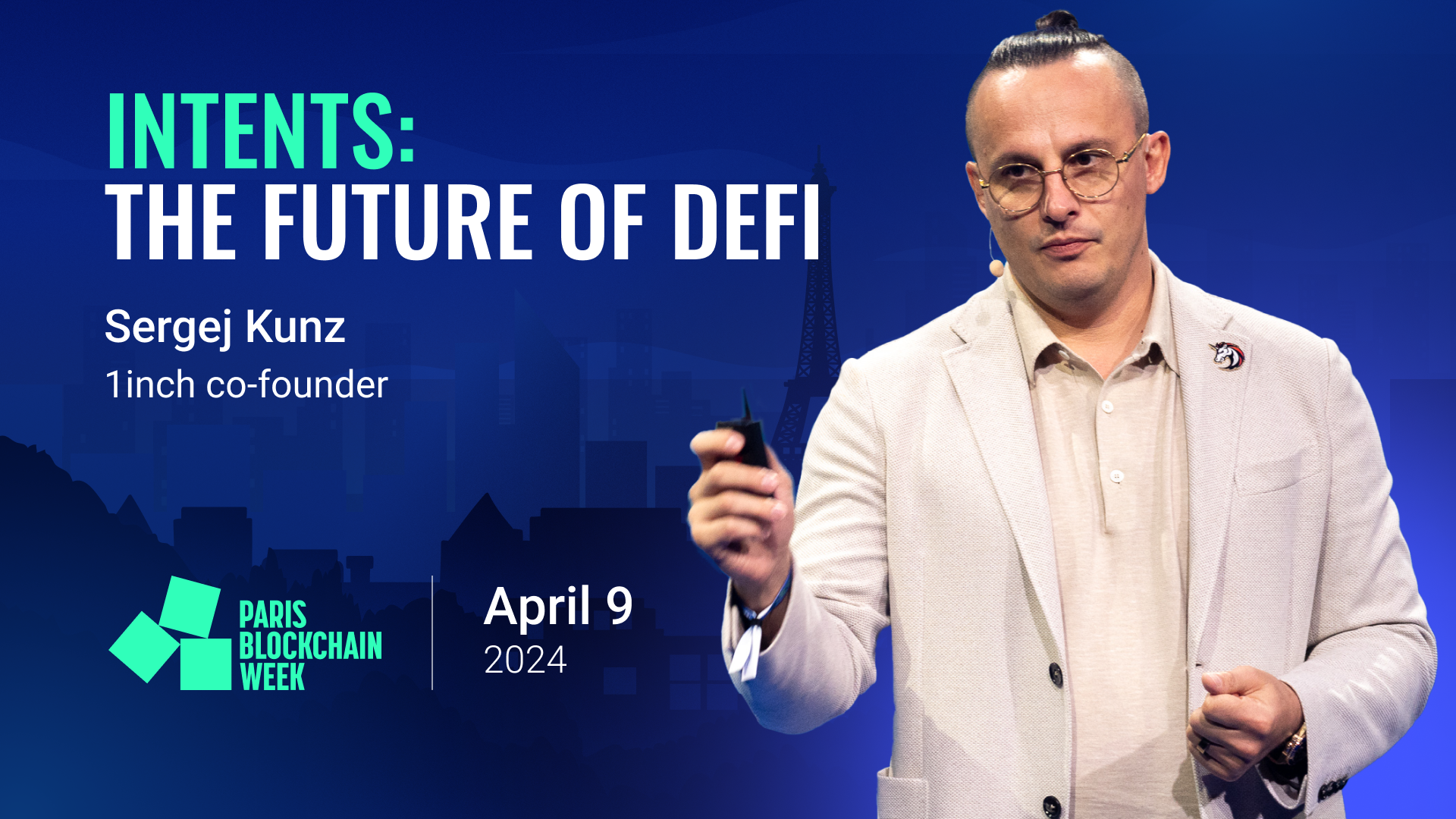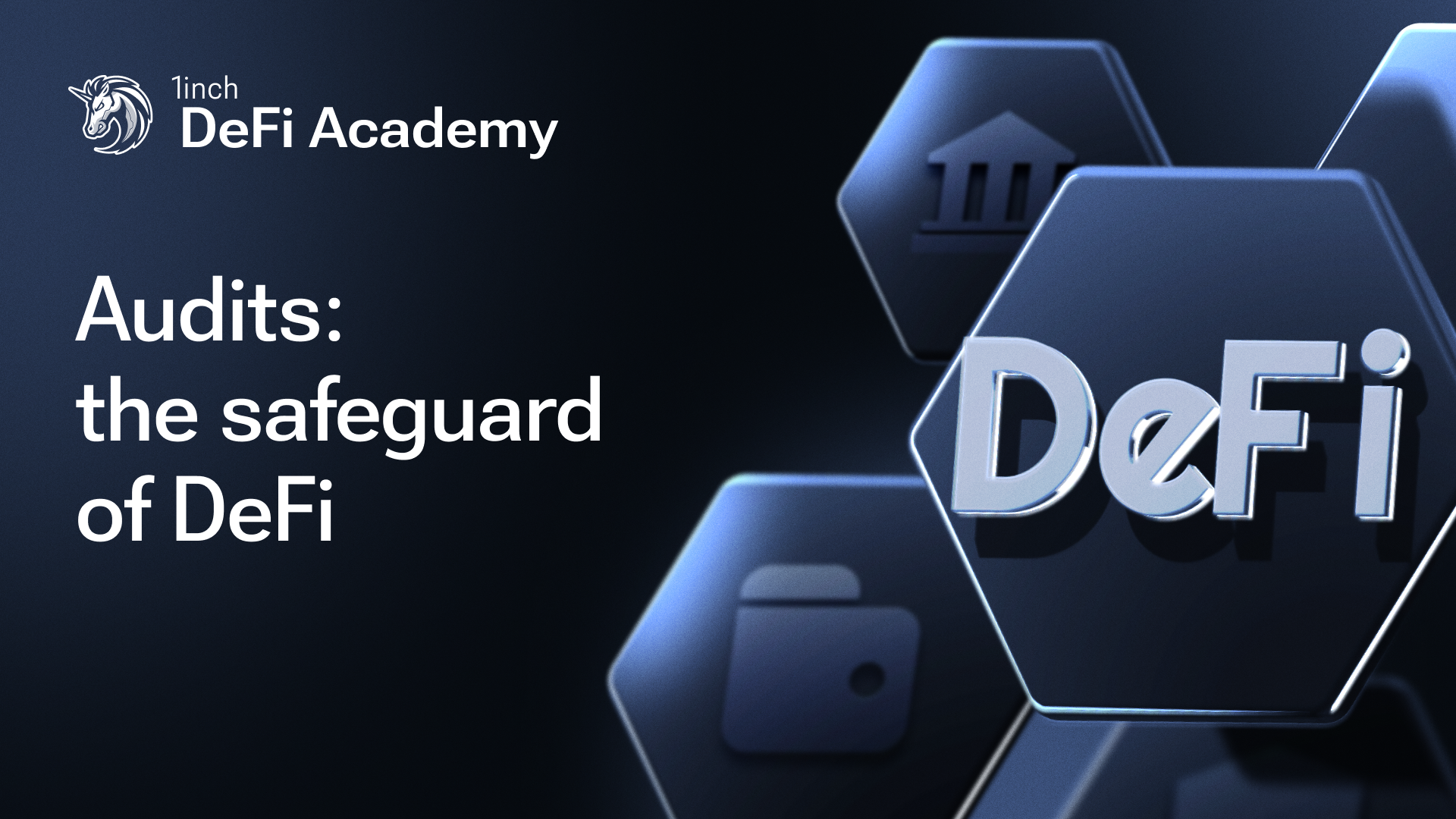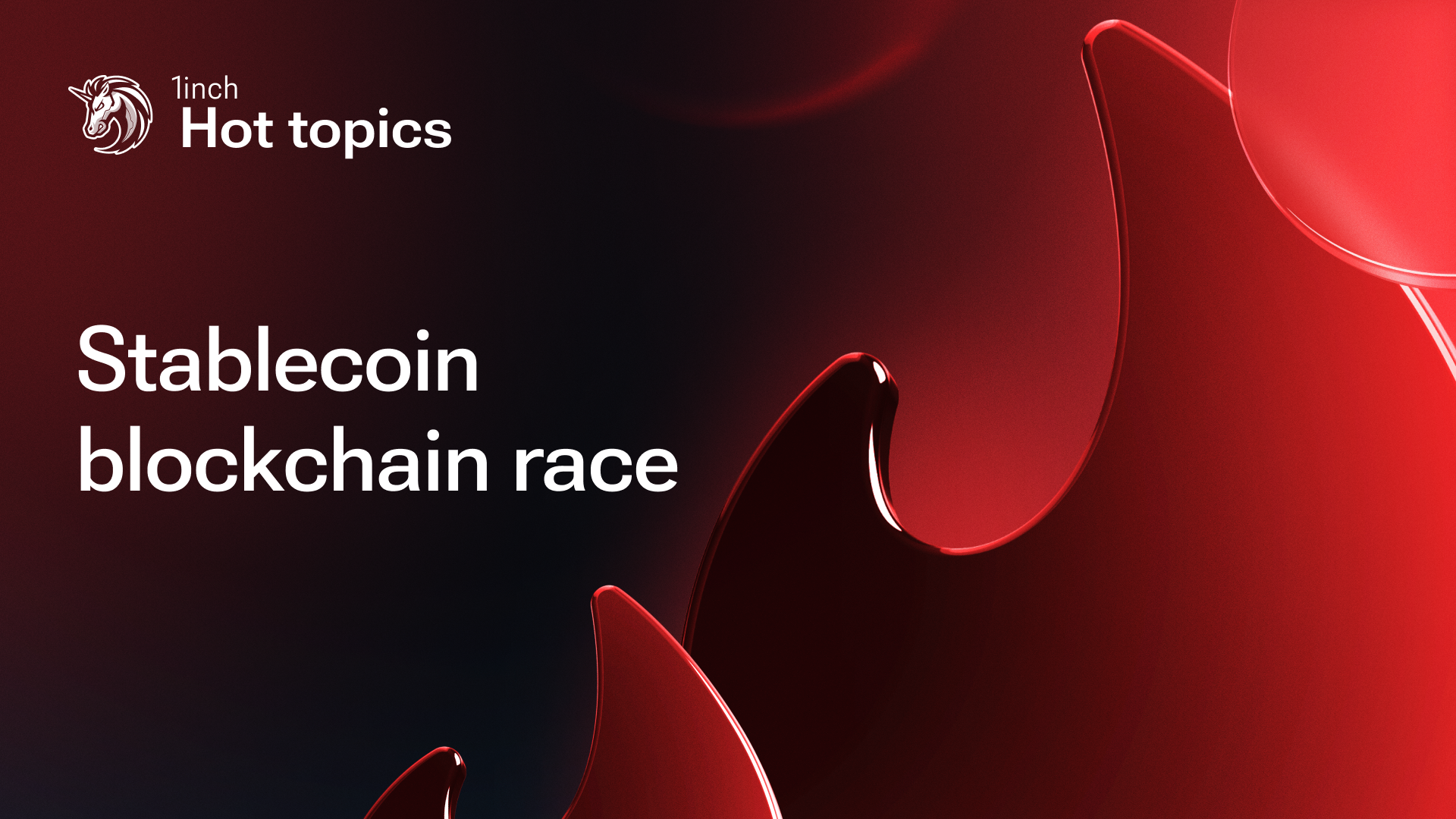1inch’s Sergej Kunz explains the concept of intents

In his keynote address at the Paris Blockchain Week, 1inch co-founder Sergej Kunz explained intents, one of the space’s hottest concepts. In this post, we offer you the main highlights of his talk.
At the Paris Blockchain Week, which was held in the French capital on April 9-11, 1inch co-founder Sergej Kunz gave a keynote address, “Intents: The Future of DeFi.”
In his talk, Sergej explained this new and hot concept, which is likely to play a major role in how the DeFi space is going to evolve.
“Intents are planned actions aimed at achieving desired goals,” Sergej said. “Intent-based architecture is a way to use DeFi to focus on WHAT users want to achieve, rather than how they achieve it.
According to Sergej, one of the main differences between regular transactions and intents is that in the former case, a user defines a strategy and executes relevant transactions by themselves.
“In this case, you face the risk that your transaction could fail, and you pay to implement the transaction,” Sergej commented, adding that another, more user-friendly approach exists, which is intent-based.
Under the intent-based approach, a user just submits a request explaining their intent, and professional market participants define a strategy and execute applicable transactions.
“The cool thing is that you don’t have to take care of the execution,” Sergej observed. “You focus on WHAT rather than on HOW, which makes a huge difference. You don’t have to worry about paying for gas, you don’t need to have native tokens.”
Sergej offered an example: “Say, you need to exchange USDC for ETH and you set a minimum return that you’re willing to accept. And professional market makers will fill your order, getting you WHAT you want to achieve, while you don’t have to worry about HOW it is achieved.”
Sergej went on to explain the main benefits of the intent-based approach.
“We are basically automating DeFi by using an intent-based architecture,” he said. “Also, we are improving risk management, as intent-based protocols protect you from MEV. You are getting a better user experience.”
According to Sergej, possible use cases for the intent-based approach are numerous, including limit orders, swaps, liquidity provision and cross-chain swaps.
Sergej also discussed how the intent-based approach is used in 1inch Fusion, offering users MEV protection by design, gasless swaps and liquidity from across the entire crypto space.
Sergej stressed that 1inch is determined to continue using the intent-based approach, and the next step in that direction will be the introduction of atomic cross-chain swaps, enabling token exchanges between different blockchains.
“The future of DeFi is intent-driven DeFi,” he concluded.
Stay tuned to learn more about 1inch news and events!




























